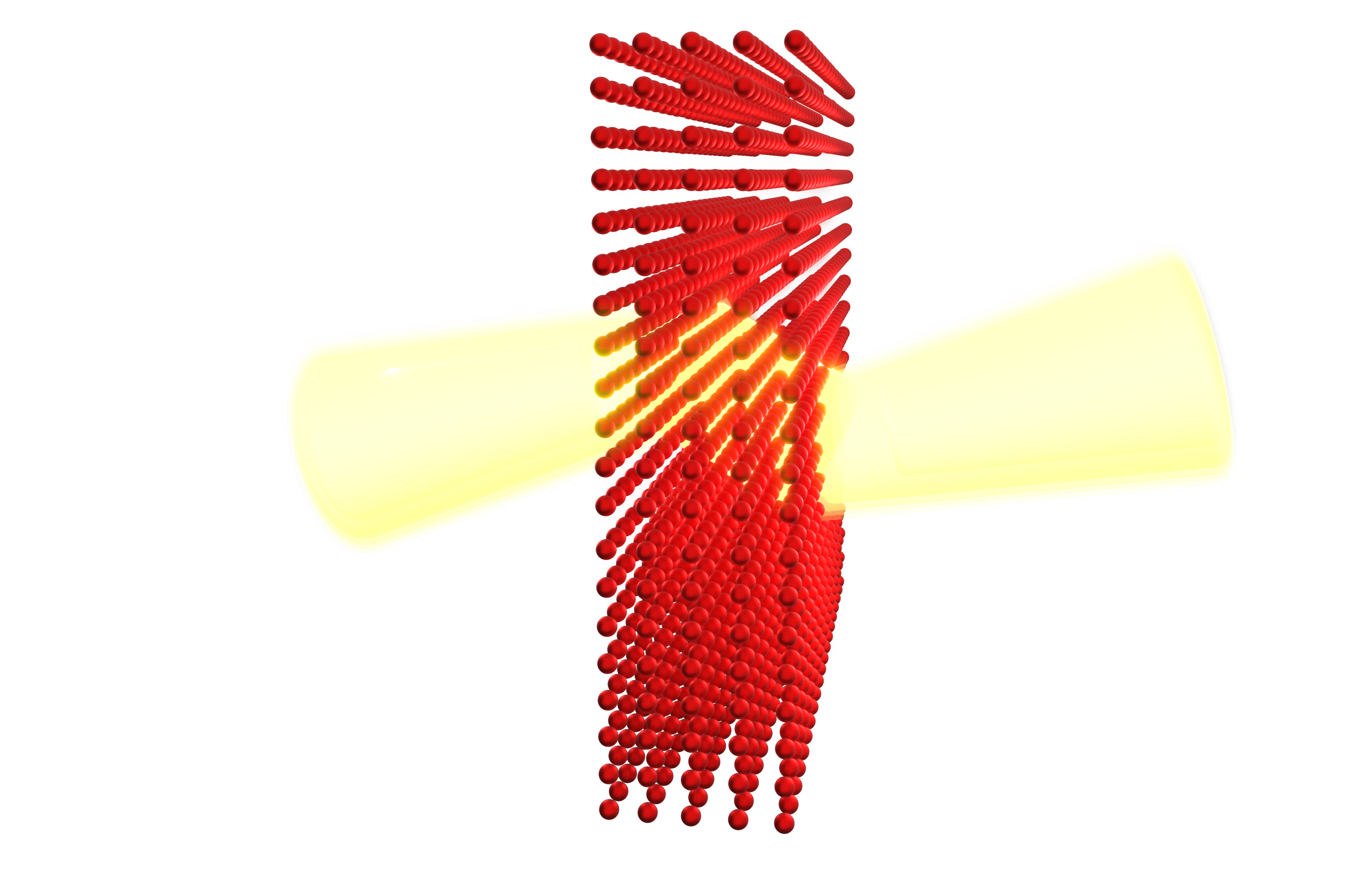Negative refraction of light using an atomic medium instead of metamaterials
Published in Physics


Natural materials interact with light through atomic transitions, where electrons jump between different energy levels. However, this interaction process has significant limitations. For instance, light primarily interacts through its electric field component, leaving the magnetic field component largely unused. These inherent constraints in the optical properties of natural materials have driven the development of artificially engineered metamaterials which rely on the phenomenon of negative refraction.
Refraction occurs when light changes direction as it passes, e.g., from air into water or glass. Negative refraction, however, is a counterintuitive effect where light in a medium bends in the opposite direction to what is typically observed in nature,challenging conventional understanding of how light behaves in materials.
The allure of negative refraction lies in its groundbreaking potential applications, such as creating a perfect lens capable of focusing and imaging beyond the diffraction limit or developing cloaking devices that render objects invisible. While negative refraction has been achieved in metamaterials, practical applications at optical frequencies remain hampered by fabrication imperfections and non-radiative losses, which still severely limit applications.
Here, we instead considered light propagation through a medium of atoms, performing detailed, microscopic atom-by-atom simulations that are exact for stationary atoms in the low light intensity limit - a condition that has been shown to describe very accurately the experiments on atoms illuminated with resonant light. With these simulations, we demonstrated that the cooperative response of atoms can enable negative refraction, eliminating the need for metamaterials in this process. The analysis revealedhigh-transmission negative refraction that is resilient to lattice imperfections, such as missing atoms and position uncertainty, over a range of incident angles, different atomic level structures and lattice constants.
In such cases, atoms interact with one another via the light field, responding collectively rather than independently. This means the response of a single atom no longer provides a simple guide to the behaviour of the entire ensemble. Instead, the collective interactions give rise to emergent optical properties, such as negative refraction, which cannot be predicted by examining individual atoms in isolation.
These effects are made possible by trapping atoms in periodic optical lattices. Optical lattices are like "egg cartons" made of light, where atoms are held in place by standing light waves. These precisely arranged atomic crystals allow researchers to control the interactions between atoms and light with extraordinary precision, paving the way for novel technologies based on negative refraction.
Follow the Topic
-
Nature Communications

An open access, multidisciplinary journal dedicated to publishing high-quality research in all areas of the biological, health, physical, chemical and Earth sciences.
Ask the Editor – Space Physics, Quantum Physics, Atomic, Molecular and Chemical Physics
Got a question for the editor about Space Physics, Quantum Physics, Atomic, Molecular and Chemical Physics? Ask it here!
Continue reading announcementRelated Collections
With Collections, you can get published faster and increase your visibility.
Women's Health
Publishing Model: Hybrid
Deadline: Ongoing
Advances in neurodegenerative diseases
Publishing Model: Hybrid
Deadline: Dec 24, 2025


Please sign in or register for FREE
If you are a registered user on Research Communities by Springer Nature, please sign in